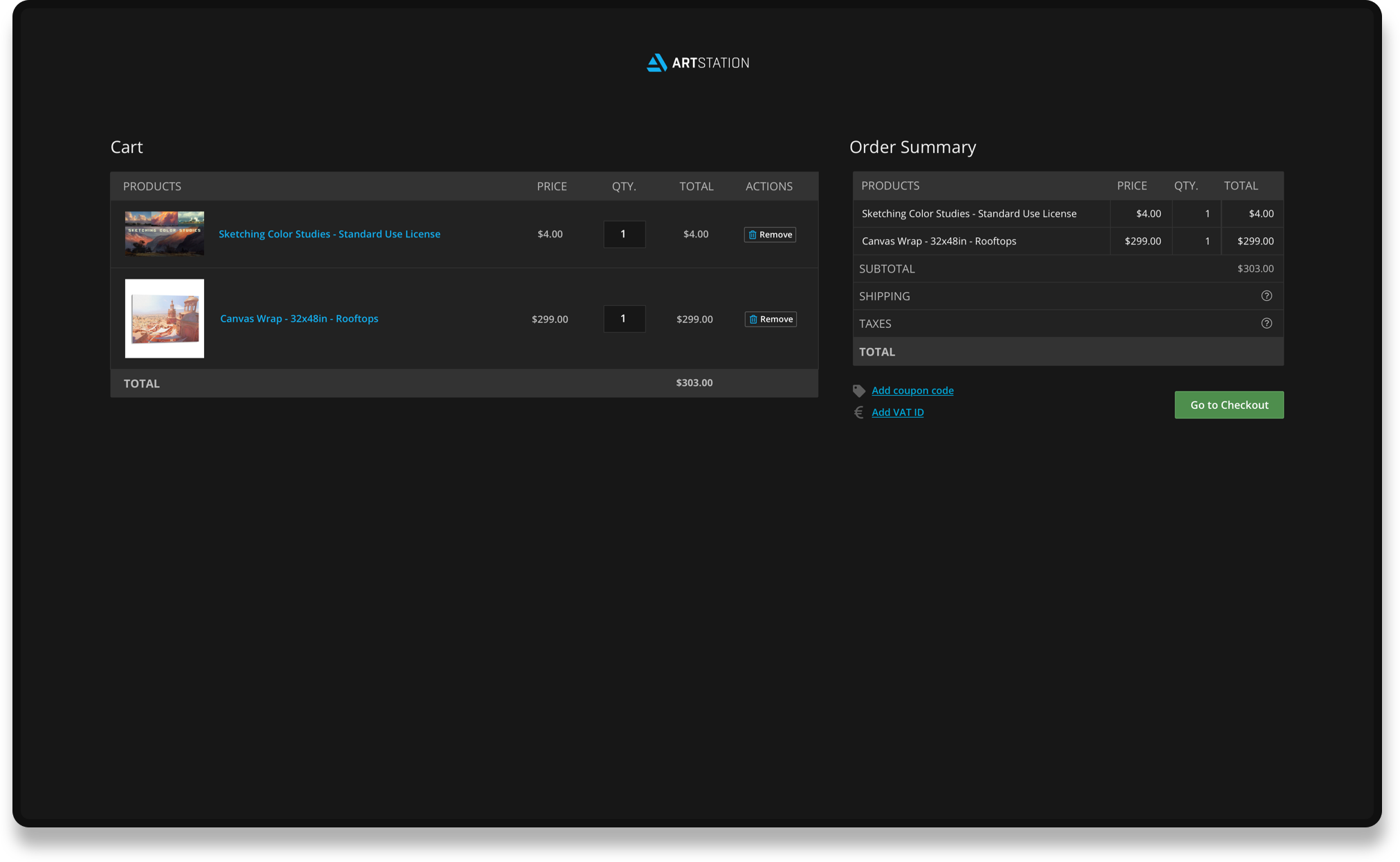ArtStation enables artists to monetize their work by selling digital goods (like brushes, remade 3D assets, and tutorials) to other artists.
In early 2019 we released ArtStation Prints, which gave artists the opportunity to create and sell high-quality prints of their art (to read up on that, check out my
Prints case).
The existing ArtStation checkout form hadn’t changed since the digital marketplace was released. It was in need of a general UX revamp and had to work seamlessly with physical goods.





















Order summary out of sight